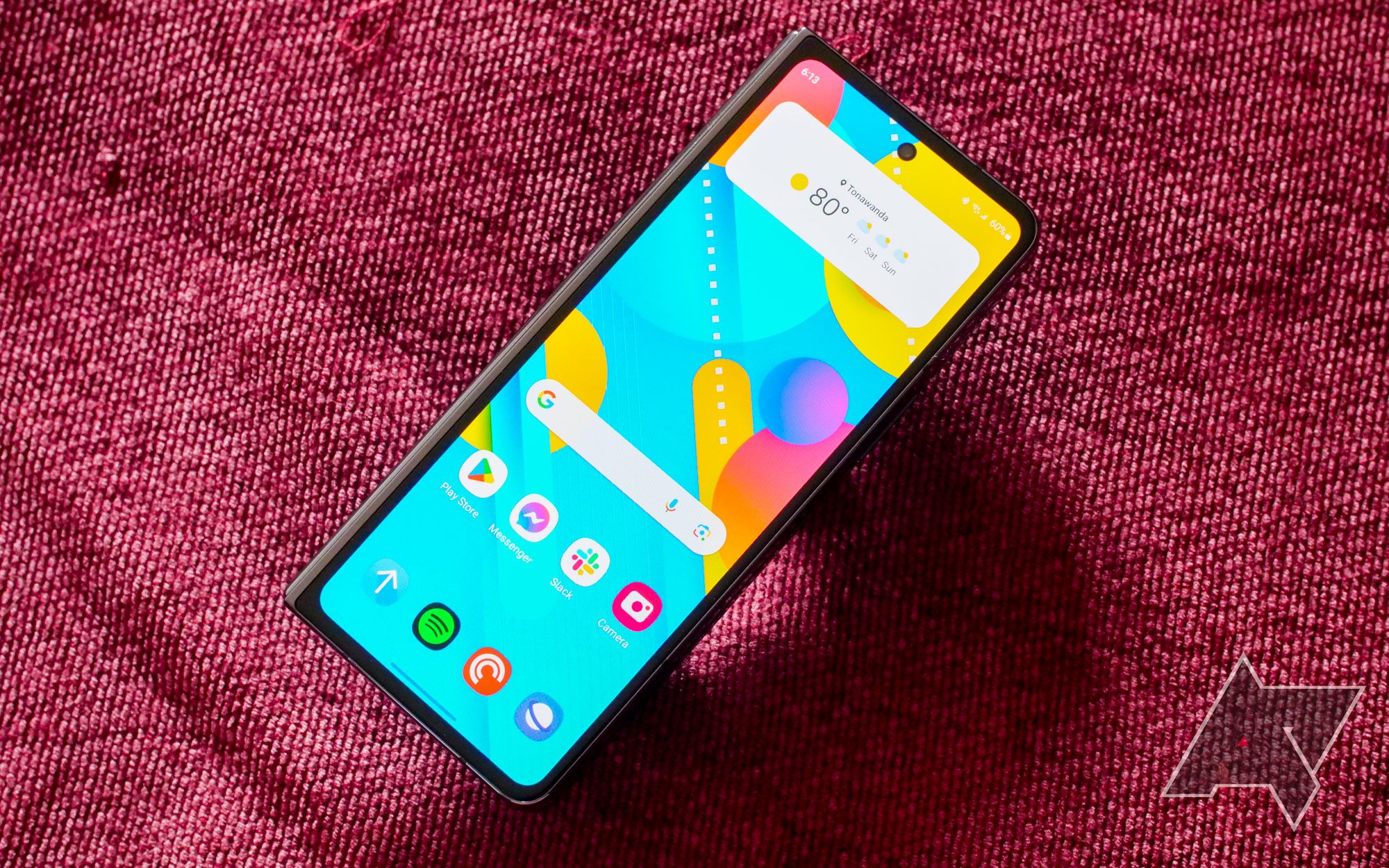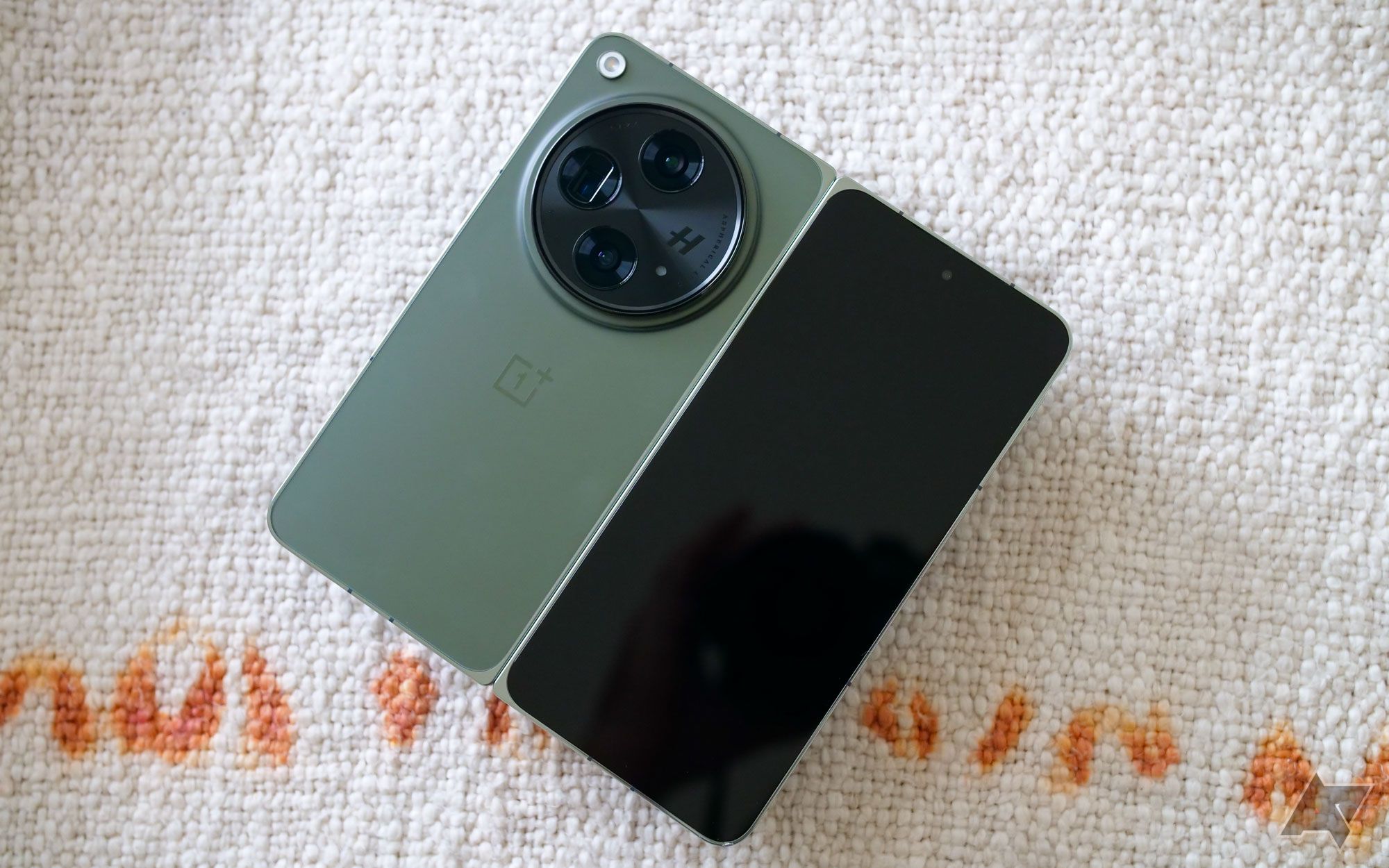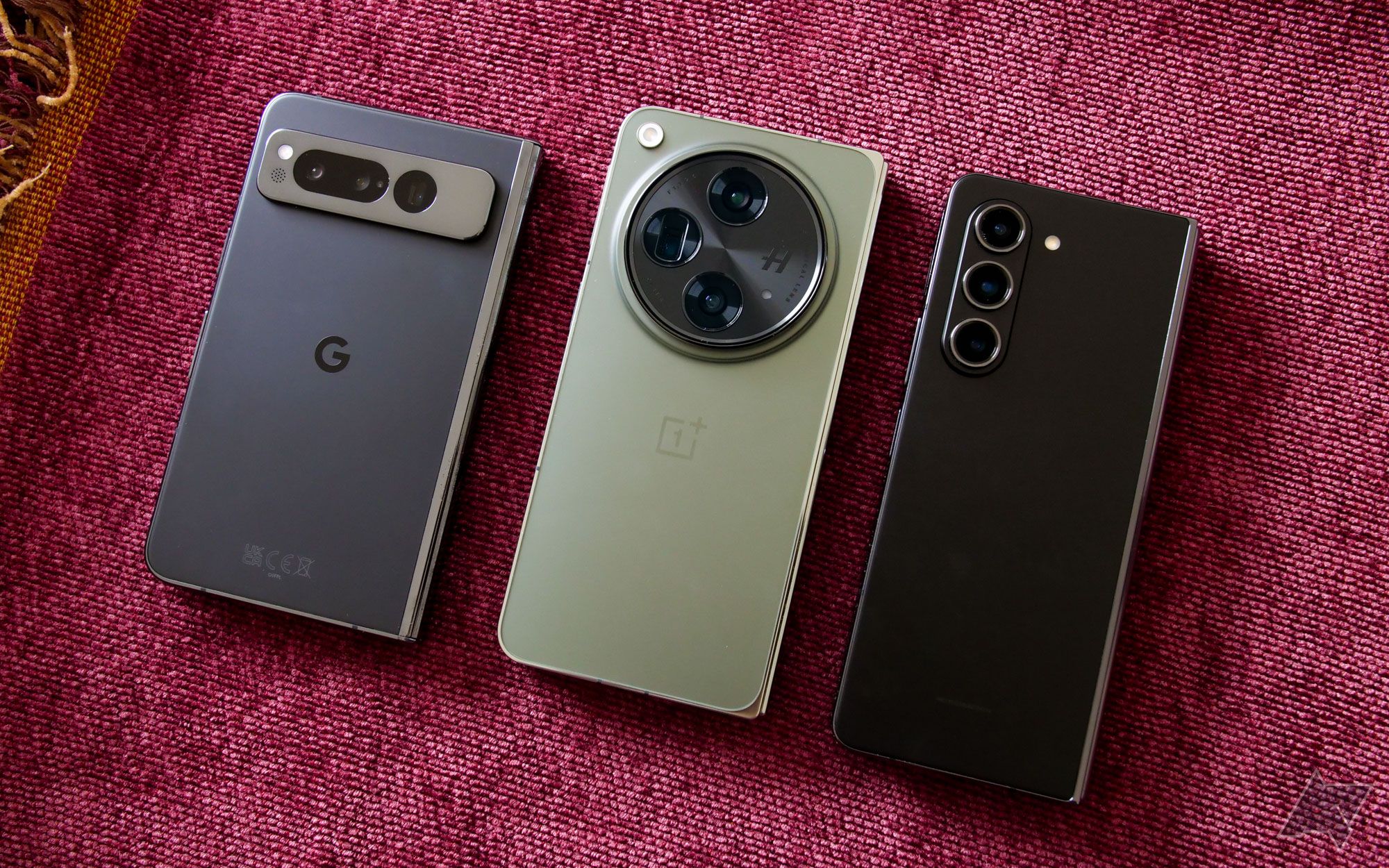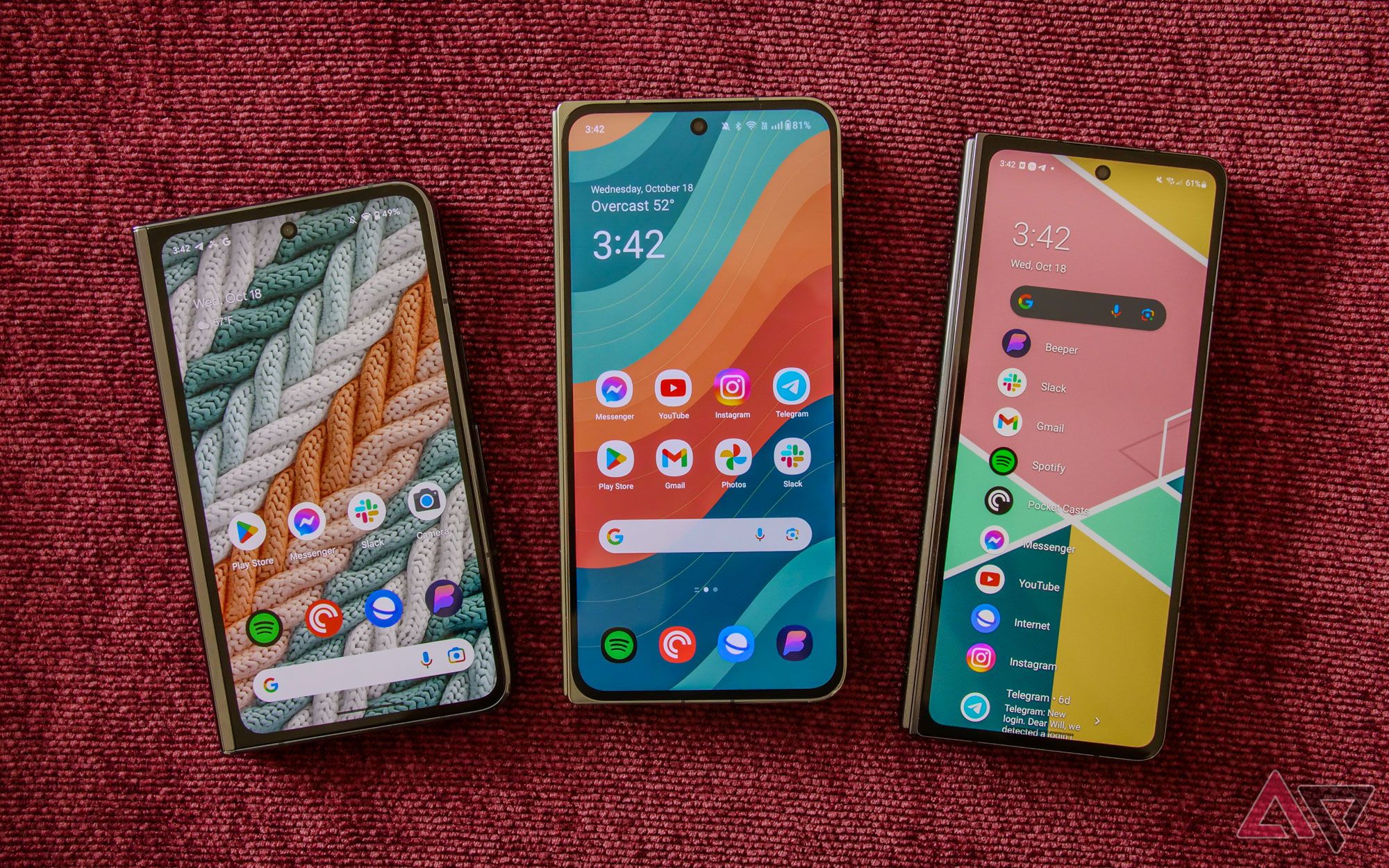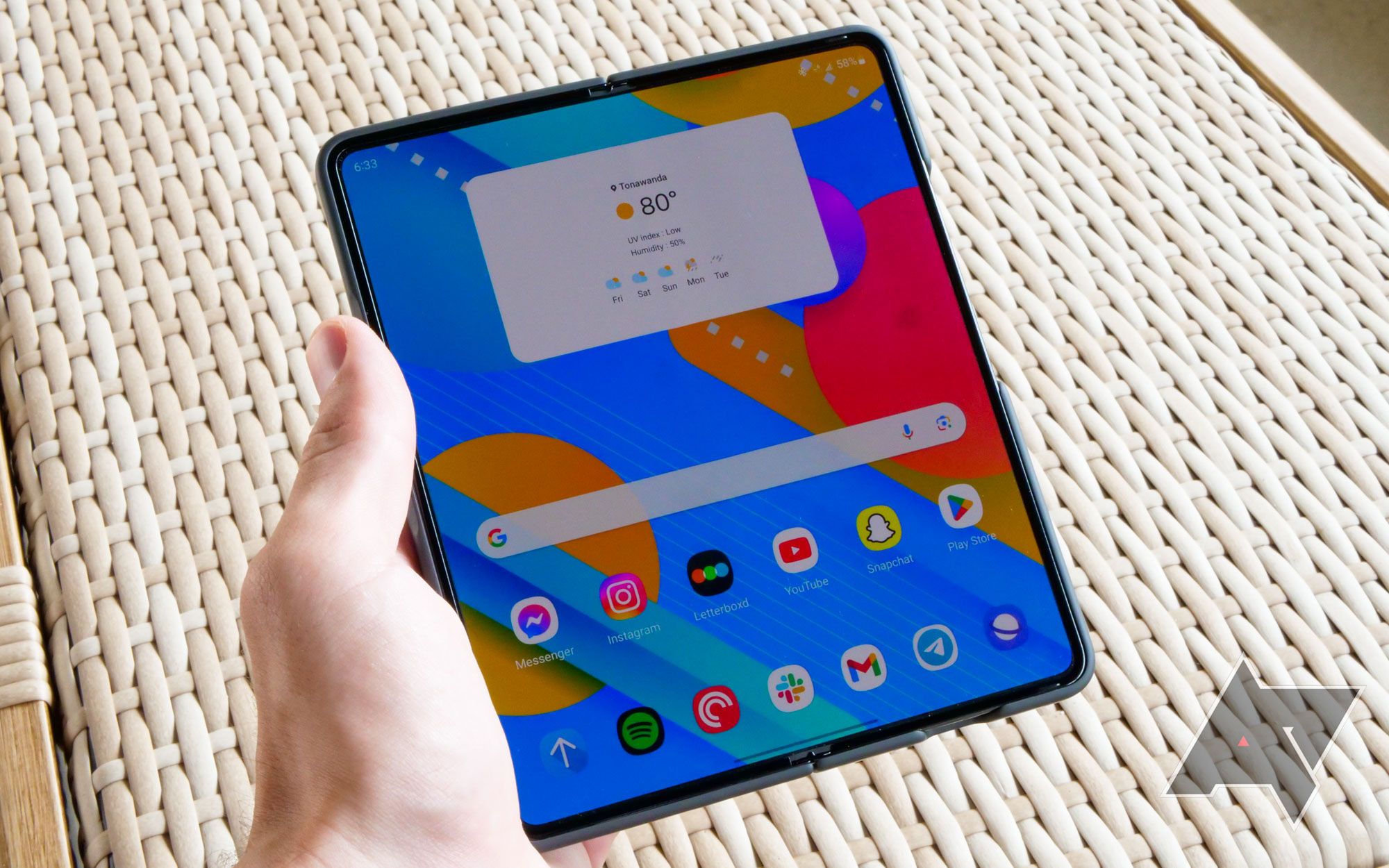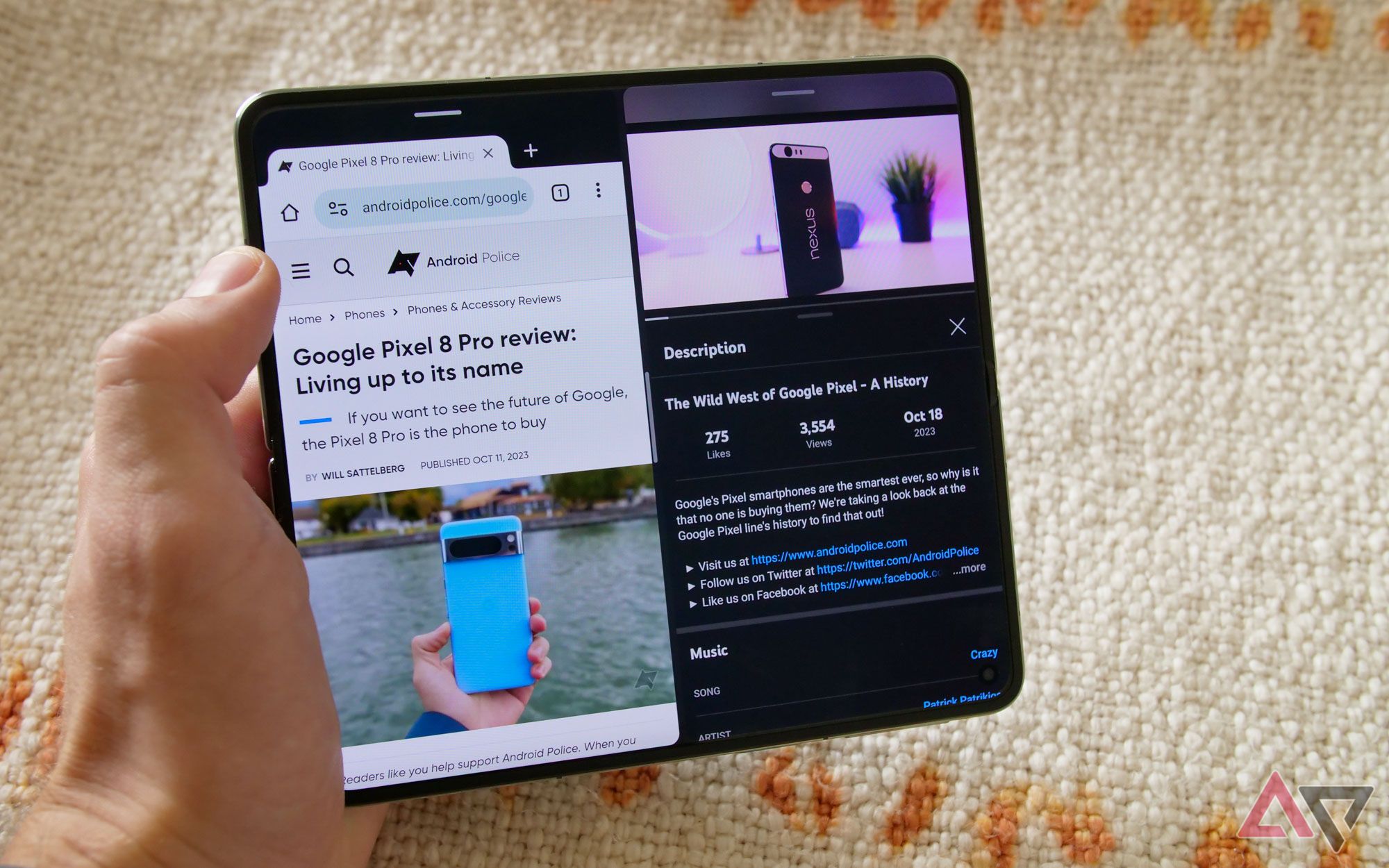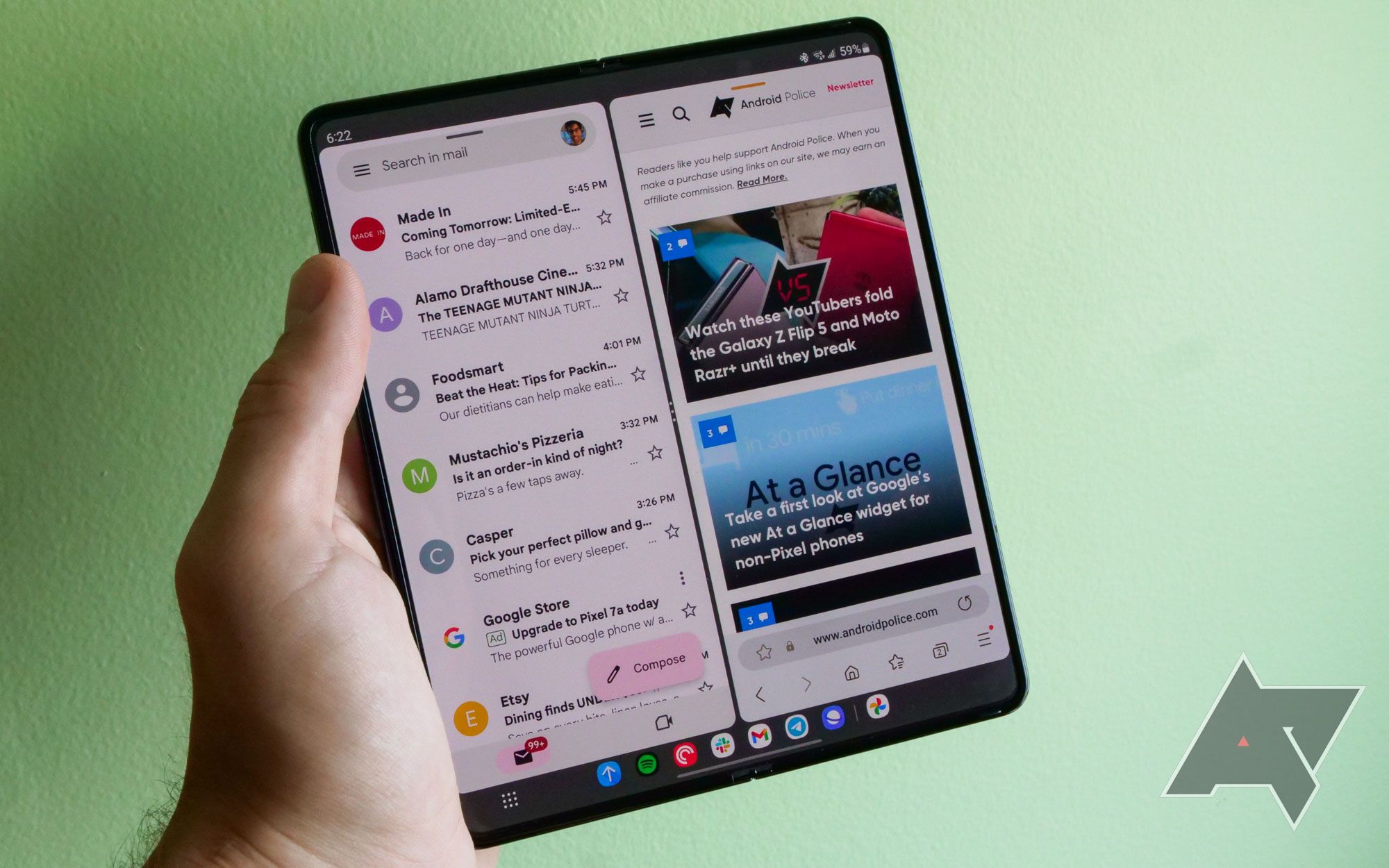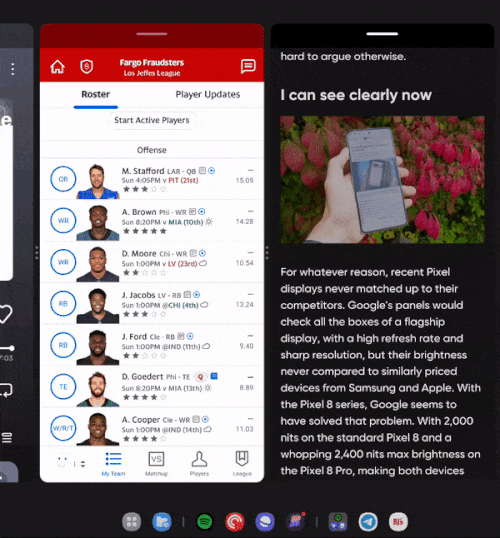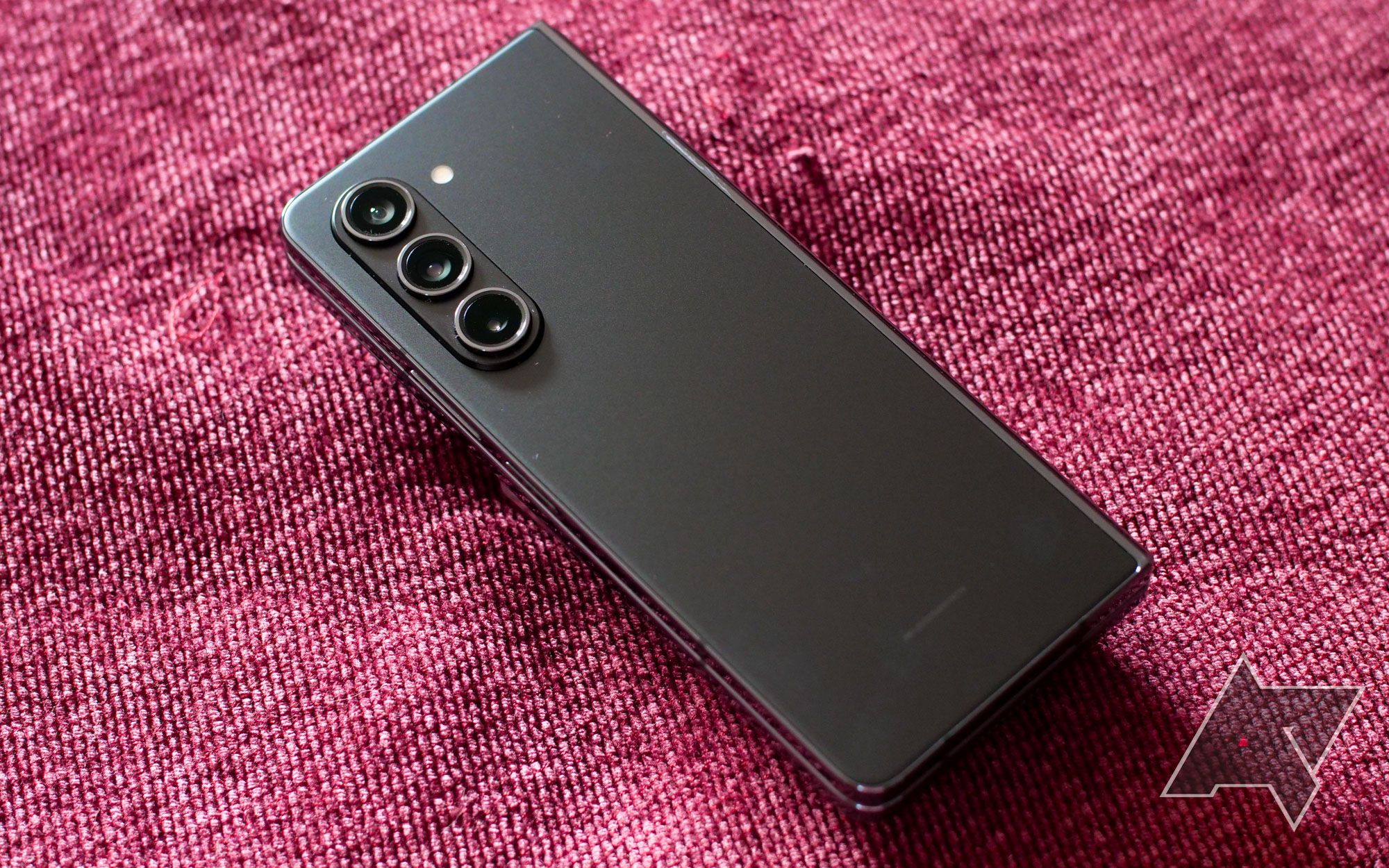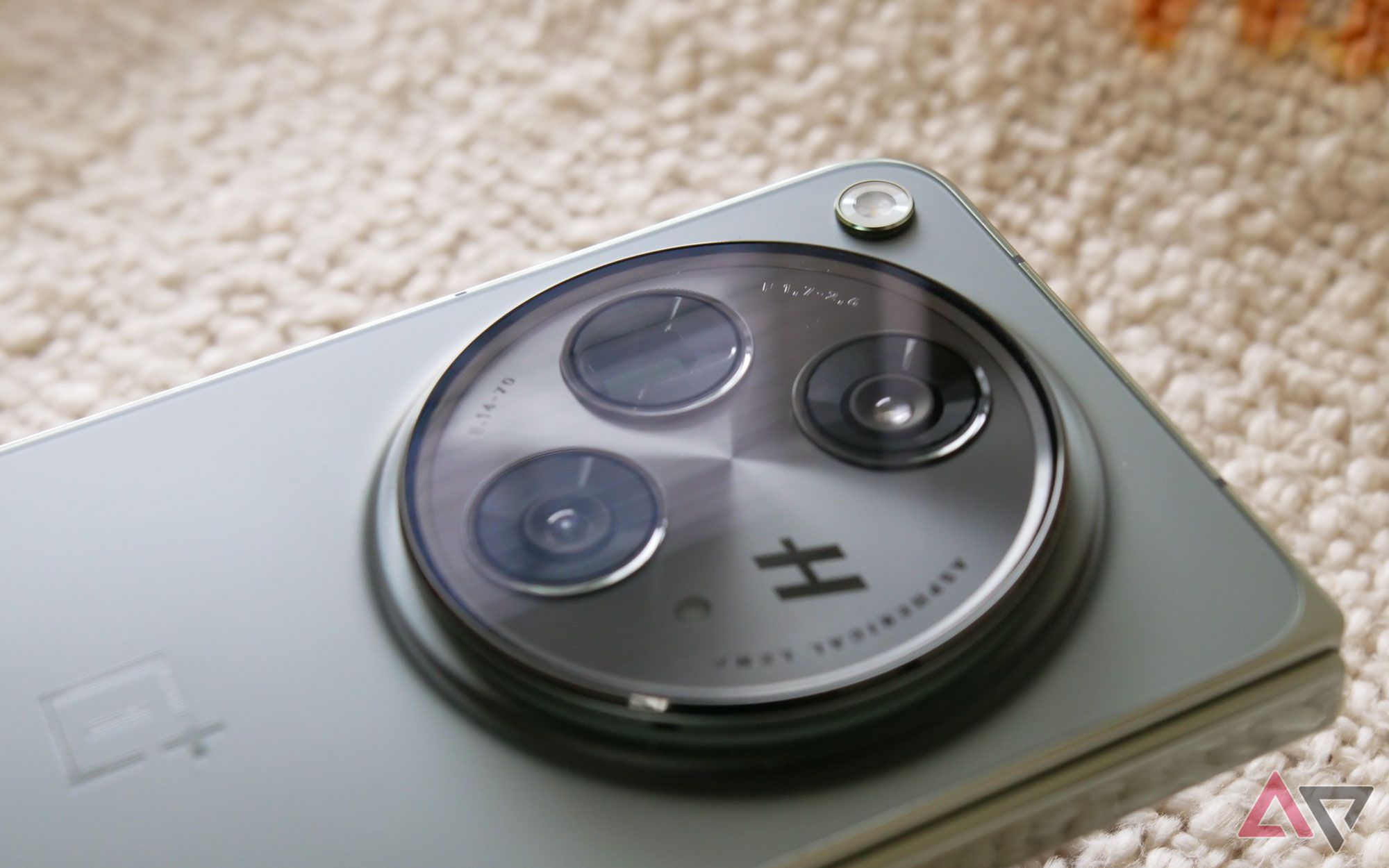-
OnePlus Open
Hot hardwareThe OnePlus Open combines a well-designed multitasking experience, user-friendly design, high-resolution cameras, and rapid charging capabilities to offer a well-rounded flagship Android experience. While it may lack wireless charging and a waterproof rating, the OnePlus Open presents a compelling choice for those looking to embrace the foldable smartphone experience in 2023.
Pros- Outer display feels natural
- Faster charging
- High resolution cameras
Cons- No waterproof rating
- No wireless charging
- Oxygen OS quirks
-
Samsung Galaxy Z Fold 5
Smooth softwareThe Galaxy Z Fold 5 continues Samsung’s foldable legacy with a refined design, dependable software, and practical features like wireless charging, waterproofing, and S-Pen support. But, its narrow outer display, subpar camera performance given the price, and modest charging speeds leave room for more exciting innovations in the foldable smartphone landscape.
Pros- Wireless charging, IPX8 rating
- More mature software
- Better tuned displays
Cons- Outer display is too narrow
- Slow charging
- Camera hardware needs update
Picture the world of foldable smartphones as a modern twist on the timeless fable of the hare and the tortoise. Samsung, the hare in this narrative, made a sprinting start five years ago when they essentially pioneered this category with the introduction of the Galaxy Z Fold series. However, this early lead may have caused a degree of complacency in the tech giant. With limited competition to challenge them, the last three iterations of Samsung’s Fold series have shown only incremental advancements, putting innovation on the back burner.
Enter the OnePlus Open, OnePlus’ inaugural foray into the world of foldables. Leveraging the expertise garnered from two generations of foldable innovation by its parent company, Oppo, the OnePlus Open breaks the mold in crucial areas such as camera capabilities, battery life, and a refined design. In fact, the OnePlus Open may just have caught the Galaxy Z Fold 5 napping on its way to becoming the best Android phone you could buy right now.
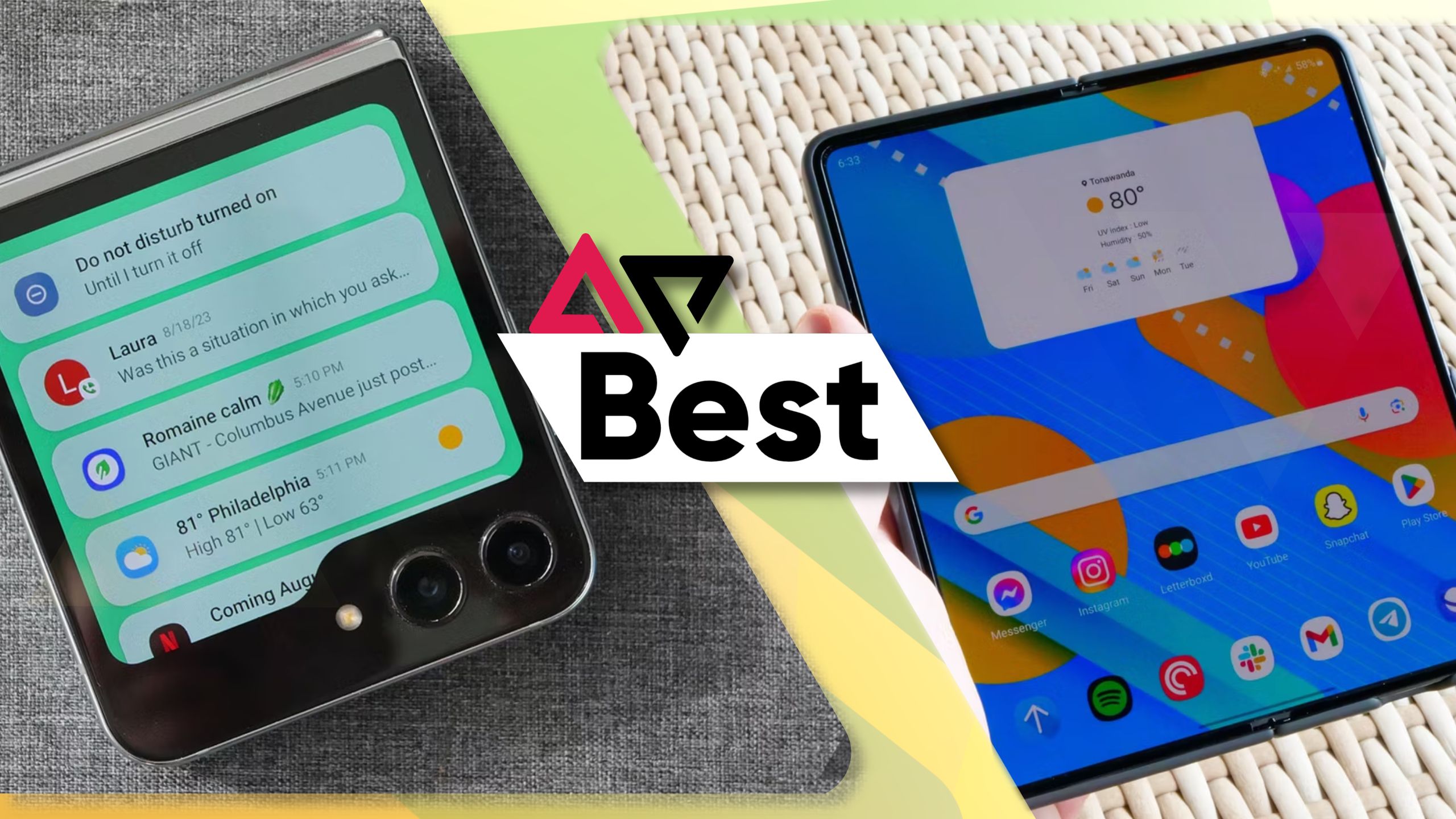
Best foldable phones in 2024
Whether you want a clamshell phone or a folding tablet, there’s something here for you
Price, availability, and specs
The OnePlus Open made its debut in October 2023 in a singular storage configuration, featuring a whopping 16GB of RAM and 512GB of storage. Originally priced at $1699 in the US, you can purchase it unlocked directly from the OnePlus website or popular retailers like Amazon and Best Buy. It’s worth noting that while you won’t find this device in carrier stores, the OnePlus Open is fully compatible with all major US 5G networks.
The Galaxy Z Fold 5 launched in August 2023 with a starting MSRP of $1799 for its base model, featuring 12GB of RAM and 256GB of storage. Notably, it offers versatility with options for 512GB and 1TB storage variants, which can take the price tag up to $2000. Samsung’s flagship foldable smartphone is available for purchase through third-party retailers as well as carrier stores.
-
OnePlus Open Samsung Galaxy Z Fold 5 SoC Snapdragon 8 Gen 2 Qualcomm Snapdragon 8 Gen 2 RAM 16GB 12GB Storage 512GB 256GB, 512GB, or 1TB Battery 4805mAh 4,400mAh Operating System Android 13, OxygenOS 13.2 Android 14 with One UI Front camera 32MP f/2.4 cover screen selfie camera; 20MP f/2.2 camera on folding screen 4MP, f/1.8 under-display camera; 10MP, f/2.2 cover display camera Rear camera 48MP f/1.7, 64MP f/2.6 3x camera, 48MP f/2.2 ultrawide 50MP, f/1.8 OIS main; 12MP, f/2.2 ultrawide; 10MP, f/2.4 OIS telephoto Dimensions 153.4 x 73.3 x 11.7mm folded; 153.4 x 143.1 x 5.8mm unfolded 67.1 x 155 x 13mm folded, 130 x 155, 6.1mm unfolded Colors Emerald Dusk, Voyager Black Ice Blue, Phantom Black, Cream + Samsung.com exclusive Gray, Blue Weight 239g 253g Charge speed 67W 25W wired, 15W wireless IP Rating IPX4 IPX8 Connectivity Dual-SIM 5G, LTe, Wi-Fi 7, Bluetooth 5.3 5G (inc mmWave), LTE, up to Wi-Fi 6E, Bluetooth 5.3, NFC Display type OLED, 120Hz OLED, 120Hz Stylus No Yes (sold separately) Display dimensions 7.82″ 7.6″ Display resolution 2440 x 2268 2176 x 1812 SIM support Nano-SIM and eSIM Nano-SIM and eSIM Wi-Fi connectivity Wi-Fi 7 Wi-Fi 6E Bluetooth Bluetooth 5.3 Bluetooth 5.3
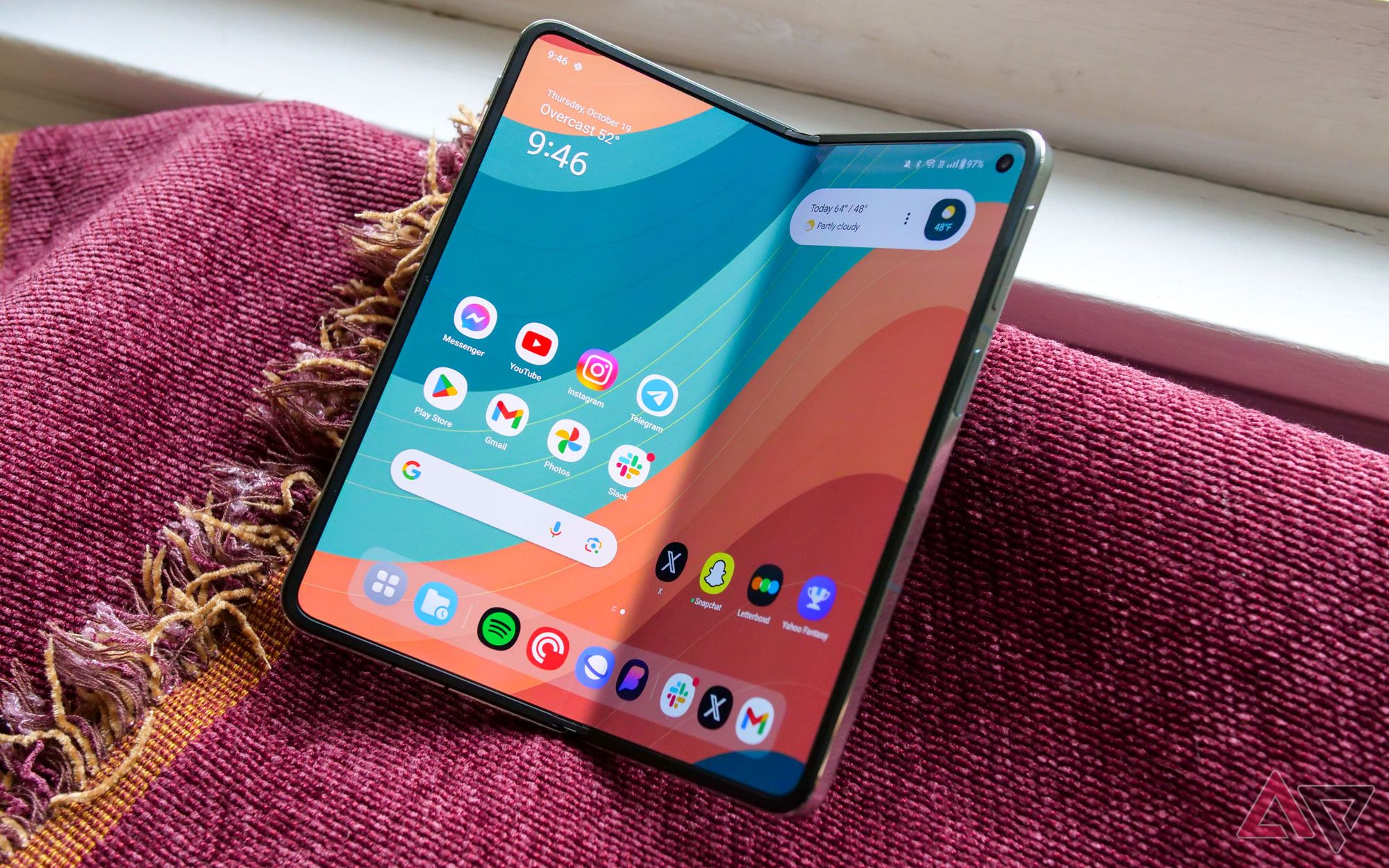
OnePlus Open review: What every foldable should be
Leave it to OnePlus to supply the competition Samsung so desperately needs
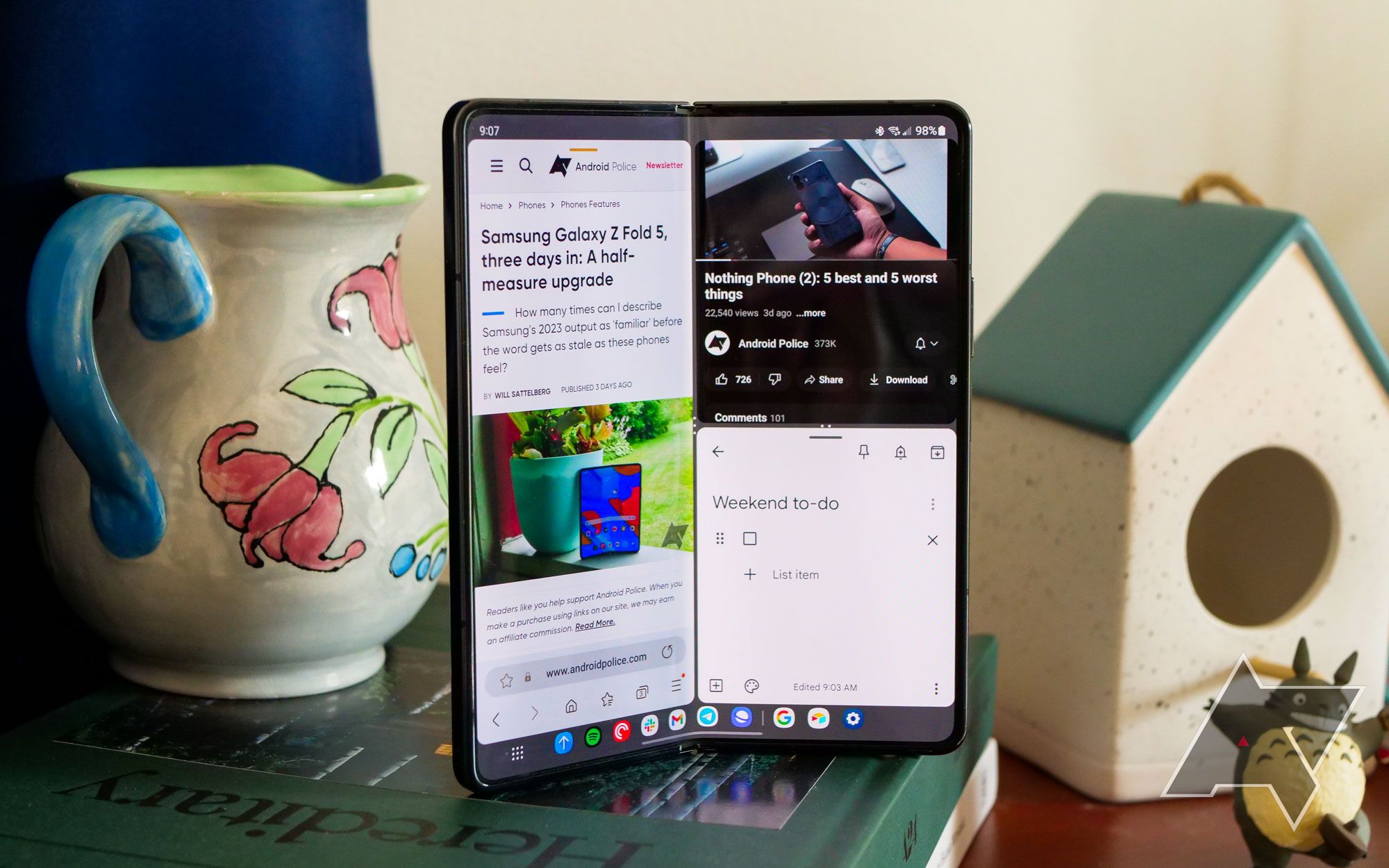
Samsung Galaxy Z Fold 5 review: Polished to a sheen
With more competition than ever before, Samsung chooses to coast
Design and build
New hinges, same great functionality
The Galaxy Z Fold 5 retains a design that echoes its predecessors, with subtle tweaks. Although the physical dimensions remain largely the same, it has managed to shed around 10 grams, making it a tad lighter. The outer display, while functional, still feels a bit on the narrow side for comfortable use. But the silver lining is a revamped hinge mechanism that achieves a flat “zero gap” fold, enhancing both aesthetics and one-handed usability.
On the flip side, the OnePlus Open opts for a wider and shorter form factor, making its cover screen significantly more user-friendly. More importantly, the OnePlus Open manages to be both thinner and lighter than the Galaxy Z Fold 5; in fact, it’s even lighter than the iPhone 14 Pro Max, an impressive feat for a foldable. However, OnePlus didn’t shy away from a bold move – it incorporated a massive circular camera island on the back, giving the phone a distinctive character, even though its substantial size may not be everyone’s cup of tea.
When it comes to braving the elements, the Galaxy Z Fold 5 holds the advantage with its IPX8 rating, allowing it to endure underwater submersion for up to 30 minutes. Conversely, the OnePlus Open has an IPX4 rating, signifying splash resistance alone, a limitation that may concern potential buyers. It’s essential to note that neither device carries a dust resistance rating.
The Galaxy Z Fold 5 also takes two more Ws in this round. Firstly, it comes with S Pen stylus support (though you’d need to purchase the S Pen separately). Secondly, it supports wireless charging, which the OnePlus misses out on. The OnePlus Open does feature an alert slider button, but do any of us even put our phones off Silent mode anymore?
When it comes to aesthetics, the Galaxy Z Fold 5 provides a selection of colors, including Cream, Phantom Black, Icy Blue, and additional exclusive options available on Samsung.com. OnePlus, sticking to its minimalist ethos, offers the OnePlus Open in classic shades of Black and Green. Interestingly, the Voyager Black variant comes with a vegan leather back, adding vintage camera aesthetic to the back. However, this does come with a slight increase in weight and thickness. For those favoring a lighter and sleeker profile, the Emerald Dusk version comes with a typical frosted glass back.
Displays and Multimedia
Bright, big, and beautiful
On the inside, the OnePlus Open inches ahead of the Galaxy Z Fold 5 with its 7.8-inch folding display, slightly overshadowing the latter’s 7.6-inch counterpart. While there’s a subtle aspect ratio difference, both devices feature nearly square displays, which inevitably lead to some letterboxing when you’re immersed in widescreen content.
However, Samsung’s complacency is evident as the Fold 5 continues to grapple with the not-so-subtle display crease. It’s not really a problem when you’re watching the screen head-on, but it’s a shame that Samsung hasn’t managed to make it better over generations. In contrast, the OnePlus Open opens up to a much less prominent crease. It’s not entirely invisible, but there’s no pronounced rift between the two sides, making it one of the least conspicuous creases in the foldable market.
The Open’s 6.3-inch outer display sounds just about the same as the 6.2-inch offering on the Galaxy Z Fold 5’s exterior, but the aspect ratios make a huge difference. Samsung’s display leans towards the tall and narrow side with a 23:9 aspect ratio, making it easier to grip single-handedly, albeit severely cramped for typing. In contrast, the OnePlus Open behaves like a regular 20:9 slab phone when closed, improving typing convenience but slightly expanding the phone’s width.
OnePlus makes a bold claim about the Open’s screens, touting them as the brightest phone displays ever with a dazzling 2,800 nits of peak brightness – although this brilliance is reserved for Dolby Vision HDR content only. In daily usage, both screens offer similar brightness levels.
Both phones feature 120Hz displays inside and out, but OnePlus takes it a step further with technically superior LTPO3 panels. These panels can adapt their refresh rates down to as low as 1Hz, depending on the content displayed. Samsung counters with exceptional color reproduction across both its screens and features a stereo speaker setup that sounds fuller, compared to the Open’s triple speaker setup.
Performance and battery
Great performance, decent battery
Under the hood, both of these powerhouses are fueled by Qualcomm’s Snapdragon 8 Gen 2 chipset. However, the Galaxy Z Fold 5 features the Snapdragon 8 Gen 2 for Galaxy, Samsung’s exclusive higher-performance iteration of the same chipset. While this might translate to slight improvements in benchmark scores and video rendering tests, the real-world experience remains impressive on both fronts. Whether you’re into intensive gaming or seamless multitasking, these devices flex enough muscle to handle whatever you throw at them.
When it comes to battery life, the OnePlus Open packs in a meatier 4,805mAh battery, compared to 4,400mAh on the Galaxy Z Fold 5. Not only does it last longer, but the real game-changer is the 80W charging speed, compared to Samsung’s 25W. You can juice up the OnePlus Open to about 85% in just 30 minutes, touching 100% in under an hour, whereas the Galaxy Z Fold 5 takes about 80 minutes to charge completely, reaching only around 50% in 30 minutes. Kudos to OnePlus for not only providing a charging brick in the box but also throwing in a protective case for good measure.
But, and there’s always a but, Samsung brings wireless charging (and reverse wireless charging) to the table, a feature notably absent on the OnePlus. This is a disappointment, especially considering the price range. OnePlus remains quite resolute in not making wireless charging a standard feature in its flagship lineup. The choice is yours, whether you prioritize lightning-fast wired charging or the convenience of wireless charging.
Software and user experience
Samsung is tough to beat
Both the OnePlus Open and the Samsung Galaxy Z Fold 5 launched with Android 13, promising an extended four-year run of OS updates. But that’s where the similarities end, as both companies offer software skins that differ a lot in terms of look and feel and how they let you make the most out of a foldable form factor.
The Galaxy Z Fold 5 runs Samsung’s One UI, which has long been appreciated for its productivity-focused software features. It boasts split-screen multitasking, a DeX mode that mimics a desktop environment, and compatibility with the S Pen Fold Edition stylus, perfect for quick note-taking and doodling. Sadly, the S Pen isn’t bundled with the phone, and carrying it around requires specific cases designed for S Pen compatibility.
Both devices feature a taskbar that springs to life when the phones are fully unfolded, simplifying app switching and enabling the creation of multi-app combinations. Here’s where OnePlus Open introduces an extra dimension (quite literally) in its Canvas multitasking system.
This implementation has garnered a lot of eyeballs since the OnePlus Open broke cover and basically enables the concurrent operation of up to three apps in full-size windows, with some or most of the inactive apps hanging “outside” your phone’s screen. These windows can be rearranged in a multitude of ways, providing an option to view everything at once or focus on one app, eliminating the need to compress apps into a split-screen view, which may not be ideal for every application.
Both software skins offer a plethora of customization and theming options as well. That being said, Samsung still holds the upper hand in terms of overall software stability and reliability, as OxygenOS has a reputation for glitches and bugs. Samsung has also made its name for its dependable after-sales service, and OnePlus has its work cut out to ensure an overall customer experience worthy of an ultra-premium flagship phone.
Cameras
Good cameras with a slight edge to OnePlus
Both of these foldables come equipped with triple-camera setups featuring ultrawide, wide, and 3x telephoto lenses. The Galaxy Z Fold 5 sticks with what worked last time around, featuring the same 50MP primary sensor, 12MP ultrawide lens, and 10MP telephoto camera as its predecessor.
OnePlus deploys a duo of 48MP sensors for its primary and ultrawide lenses and a high-resolution 64MP sensor for its telephoto. This telephoto lens can perform 3x optical zoom and boasts an intriguing 6x “lossless in-sensor zoom” capability, which proved to be more than just marketing jargon during our testing.
In the selfie department, the OnePlus Open packs in a 32MP shooter on its external display and a 20MP internal selfie camera nestled in a punch-hole on the folding screen. While the punch-hole may disrupt the tablet’s display, it does offer a considerable upgrade from the Galaxy Z Fold 5’s 4MP under-display camera. However, the under-display technology in the Z Fold 5 enables it to essentially disappear behind the screen when you’re viewing content in full screen, offering a unique trade-off. Additionally, the Z Fold 5 features a 10MP external selfie camera.
In real-world camera performance, both these devices hold their ground, but the OnePlus has a definite edge. The Galaxy Z Fold 5 embraces Samsung’s signature style, producing photos with vivid colors and eye-catching blues that are social media-ready. On the other hand, OnePlus brings Hasselblad’s color science into the mix, resulting in more realistic color tones. While it may not always grab immediate attention, it adds a touch of authenticity to your shots.
OnePlus Open vs Galaxy Z Fold 5: Which is right for you?
The OnePlus Open truly surprised us with how polished it is as a first-generation foldable. The thoughtfully designed multitasking experience, user-friendly design, high-resolution cameras, and rapid charging capabilities collectively make it a compelling choice for those who seek enhanced productivity and a fresh approach to foldable smartphones.
While it may have left a few stones unturned, like the absence of wireless charging and a waterproof rating, the OnePlus Open deserves a serious look if you’re open to the idea of embracing a foldable as your daily driver in 2023.
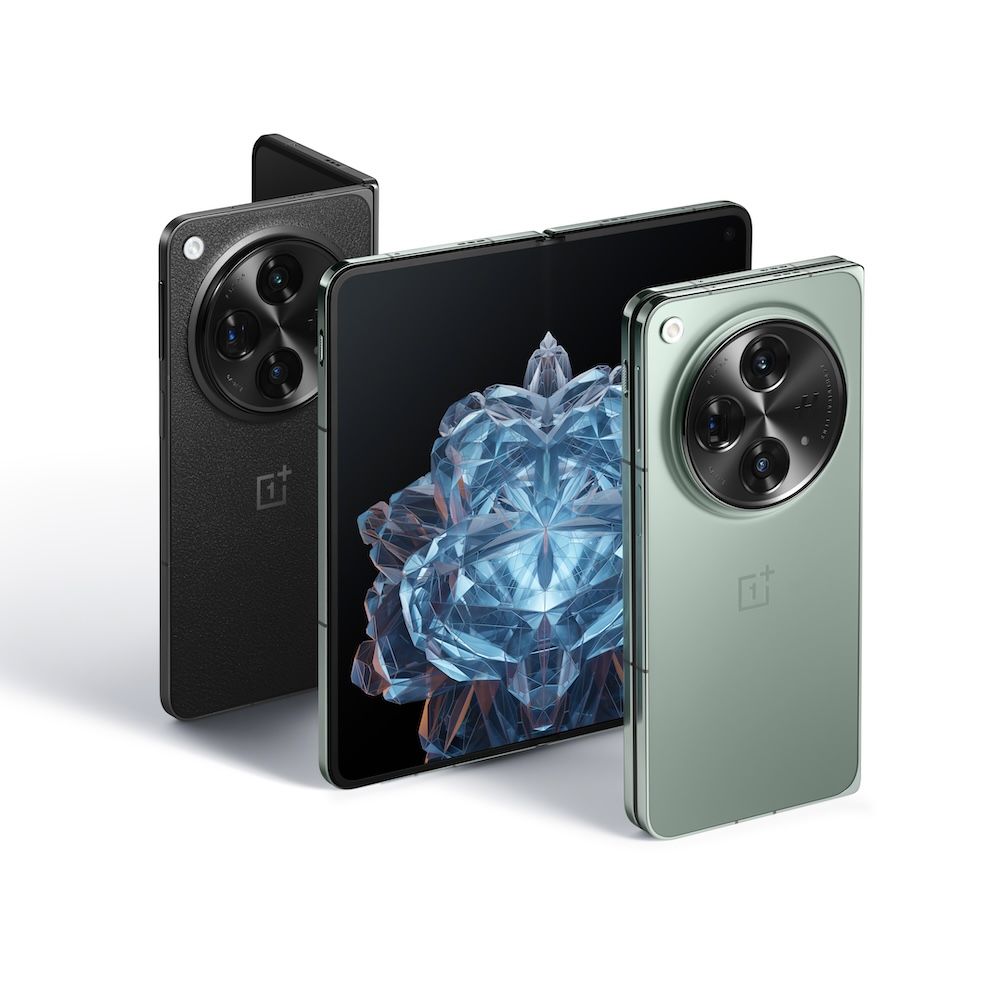
OnePlus Open
The OnePlus Open offers a great design, good cameras, and a long-lasting battery with rapid charging to offer a well-rounded flagship Android experience. While it may lack wireless charging and a waterproof rating, the OnePlus Open presents a compelling choice.
In contrast, the Samsung Galaxy Z Fold 5, backed by a rich legacy in the foldable category, maintains its reputation as a dependable contender. Its software stability, after-sales support, and broader ecosystem integration continue to make it a reliable choice. Moreover, the inclusion of wireless charging and a waterproof rating add a layer of convenience and assurance.
However, it’s evident that Samsung’s foothold in the market has led to some complacency. The Z Fold 5 suffers from unresolved quirks like the peculiar aspect ratio of the outer display, camera hardware that doesn’t quite match the price, and somewhat modest charging speeds, which leaves just enough room for the OnePlus Open to become the most exciting foldable phone in 2023.
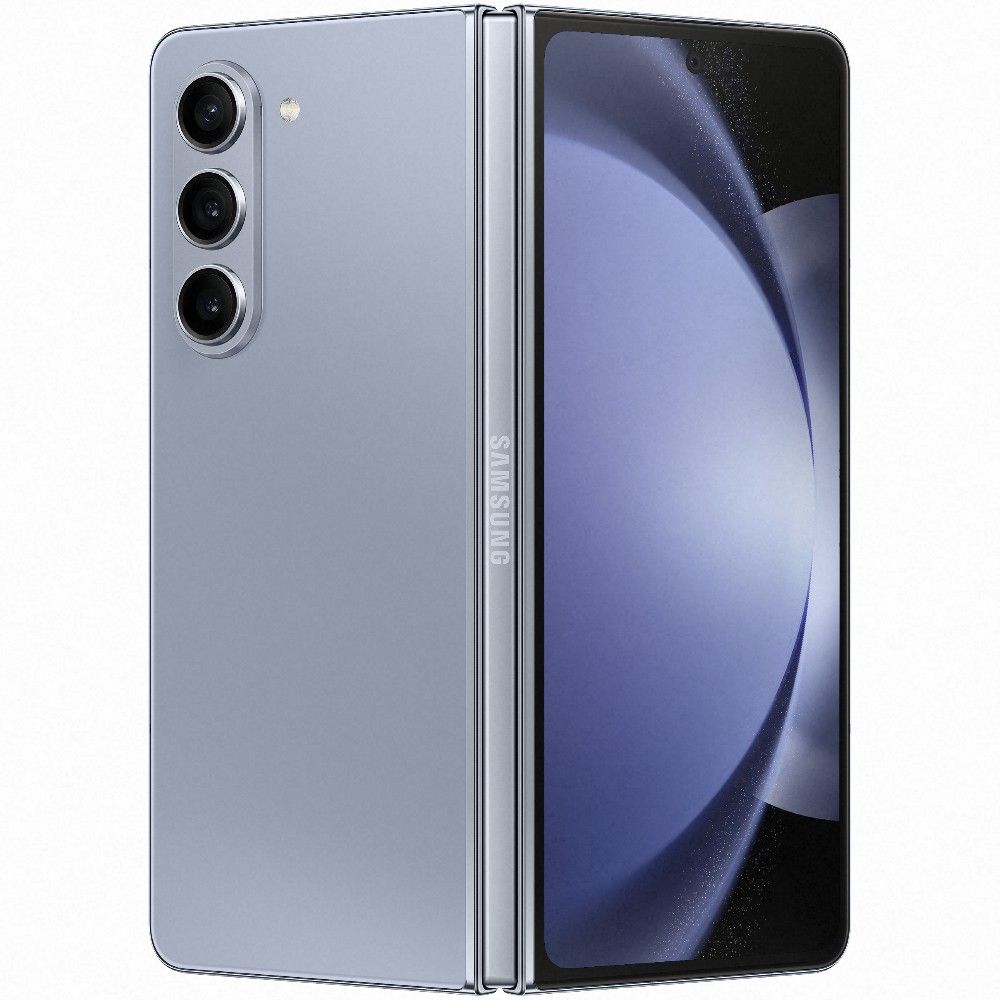
Samsung Galaxy Z Fold 5
The Galaxy Z Fold 5 continues Samsung’s foldable legacy with a refined design, dependable software, and practical features like wireless charging, waterproofing, and S-Pen support. But, its narrow outer display, subpar camera performance given the price, and modest charging speeds leave room for more exciting innovations in the foldable smartphone landscape.




